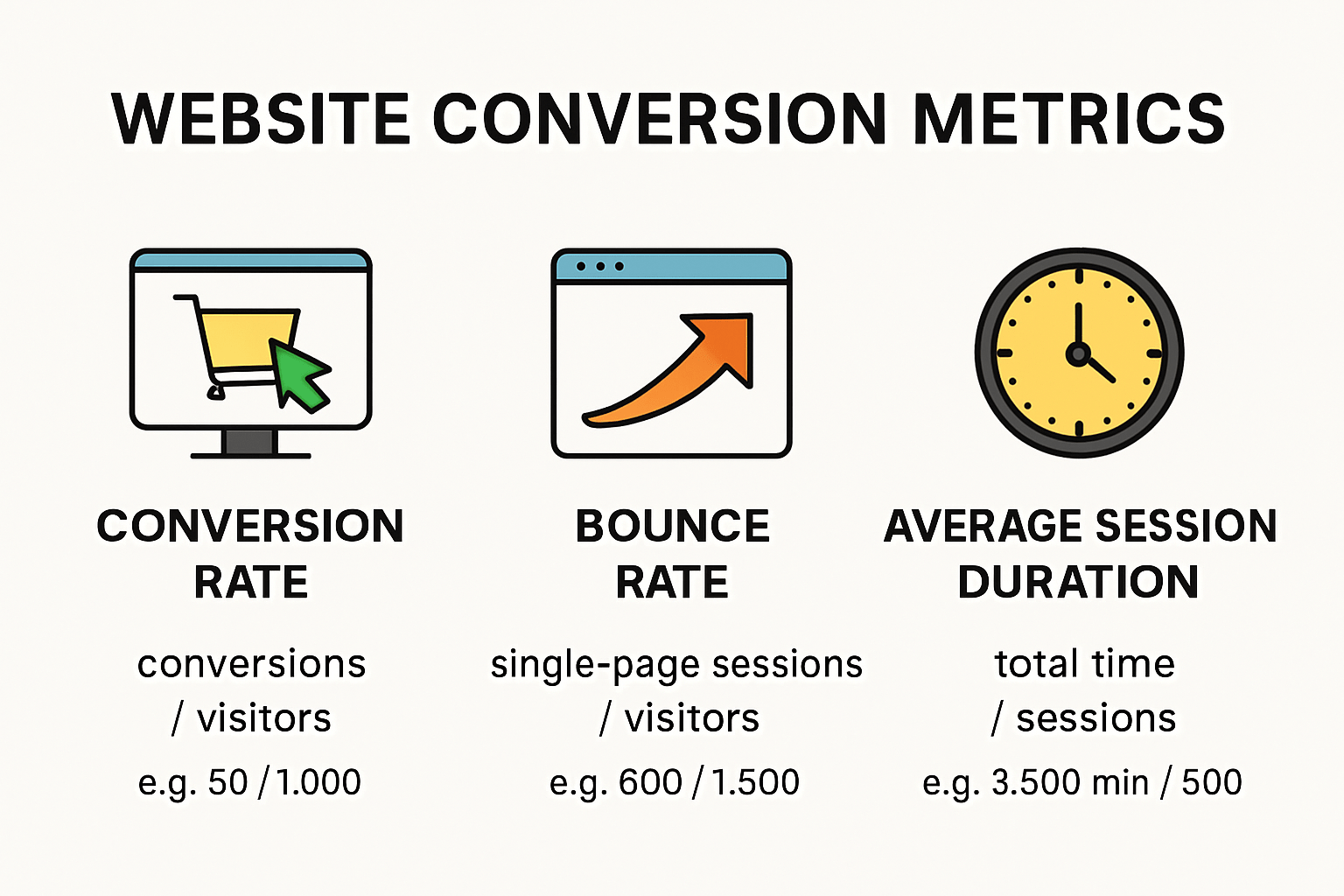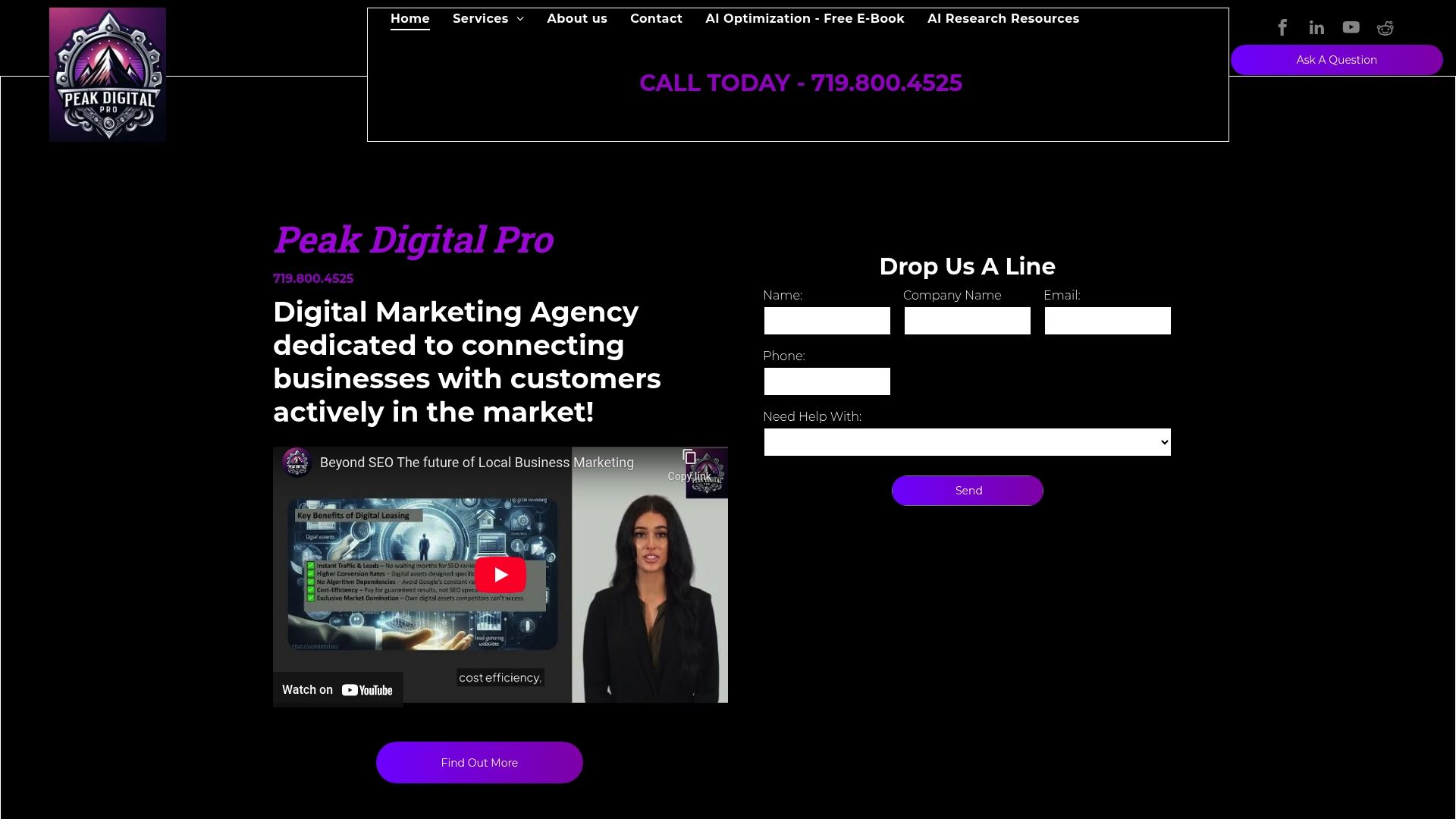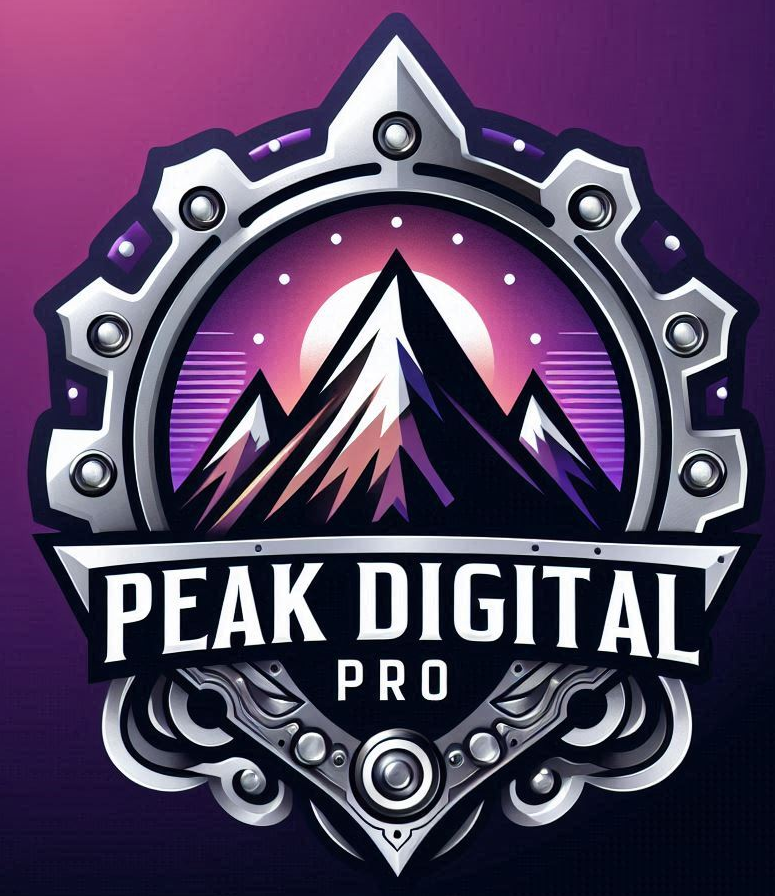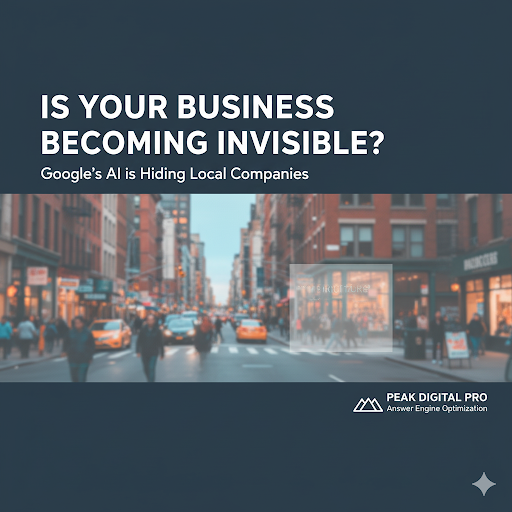Optimizing Website for Conversions: 2025 Guide for U.S. and Colorado Businesses

Every business wants more customers from their website, and the numbers show why. Even a one second delay in page load time can cause a 7 percent drop in conversions. That sounds shocking, right? Speed is only the beginning. The real way to unlock more sales and signups comes down to understanding locals, obsessing over small improvements, and using the right data. Here is how smart brands are turning their sites into conversion machines for 2025.
Table of Contents
Quick Summary
| Takeaway | Explanation |
|---|---|
| Understanding Conversion Metrics Is Critical | Conversion rate, bounce rate, average session duration, and click-through rate are essential metrics to track to effectively measure and enhance website performance. |
| Prioritize User Experience in Design | A/B testing, clear navigation, responsive layouts, and minimalist designs can significantly improve the user experience and drive higher conversion rates. |
| Focus on Local Market Dynamics | Tailoring conversion strategies to fit Colorado’s unique consumer preferences and regional characteristics can enhance engagement and trust with local audiences. |
| Utilize Robust Analytics Tools | Leveraging tools like Google Analytics and Hotjar helps in understanding user behavior, performance metrics, and identifying areas for optimization. |
| Continual Optimization Process | Regular monitoring, adaptive strategies, and testing different approaches are necessary to maintain and improve conversion rates over time. |
Understanding Website Conversions and Key Metrics
Website conversions represent the critical moment when a visitor takes a desired action that delivers measurable business value. These actions transform passive website traffic into tangible results like sales, leads, or sign-ups. Understanding the mechanics behind conversions means examining precise digital performance metrics that reveal how effectively your online presence turns potential customers into actual revenue generators.
Defining Conversion Rate and Performance Metrics
Conversion rate is the fundamental metric tracking website effectiveness. Clevertap explains this metric as calculated by dividing total conversions by website visitors and multiplying by 100. For instance, if a website receives 10,000 visitors and generates 300 conversions, the conversion rate would be 3%.
Key performance indicators businesses should monitor include:
- Conversion Rate : Percentage of visitors completing a desired action
- Bounce Rate : Percentage of visitors leaving after viewing one page
- Average Session Duration : Time visitors spend engaging with website content
- Click Through Rate : Percentage of users clicking specific elements or links
To help clarify the core website metrics discussed, here is a table summarizing their definitions and importance:
| Metric | Definition | Why It Matters |
|---|---|---|
| Conversion Rate | Percentage of visitors completing a desired action | Measures effectiveness at turning visitors into leads/sales |
| Bounce Rate | Percentage leaving after viewing one page | Indicates potential issues with site engagement |
| Average Session Duration | Average time a visitor spends on the website | Reflects user engagement and content relevance |
| Click Through Rate | Percentage clicking specific elements or links | Shows effectiveness of CTAs and navigation |

Strategic Conversion Analysis Techniques
Successful conversion optimization requires systematic approach and continuous improvement. Businesses must implement robust tracking mechanisms that provide granular insights into user behavior. Google Analytics offers comprehensive tools enabling detailed performance assessment.
Effective conversion analysis involves:
- Identifying user navigation patterns
- Understanding friction points in customer journey
- Analyzing demographic and behavioral data
- Testing different design and content variations
By implementing structured conversion tracking, businesses transform raw website data into actionable strategic intelligence. Professional digital marketing strategies leverage these insights to create targeted experiences that seamlessly guide potential customers toward desired actions.
Optimizing website conversions is not about manipulating visitors but creating genuine value. The most successful conversion strategies focus on understanding user needs, removing obstacles, and presenting clear pathways to solution. When businesses align their digital experience with authentic customer requirements, conversion rates naturally improve.
Precision matters in conversion optimization. Small improvements compound significantly over time. A mere 1% increase in conversion rate can translate into substantial revenue growth, making systematic analysis and continuous refinement critical for digital success.
Website conversions represent more than numerical metrics. They are the tangible expression of how effectively your digital presence communicates value, solves problems, and builds trust with potential customers. By approaching conversion optimization as a strategic discipline, businesses can unlock powerful growth opportunities in an increasingly competitive digital marketplace.
Proven Strategies for Optimizing Website for Conversions
Optimizing a website for conversions requires a strategic approach that combines technical precision with user-centered design. Successful conversion strategies go beyond aesthetic appeal, focusing on creating seamless user experiences that guide visitors toward taking desired actions.
Strategic Website Design and User Experience

Website design plays a critical role in conversion optimization. Journal of Marketing Research highlights the significant impact of A/B testing on improving conversion rates. Businesses can systematically enhance website performance by experimenting with different design elements.
Key design optimization strategies include:
- Clear Navigation : Simplify menu structures and use descriptive labels
- Responsive Layout : Ensure consistent experience across devices
- Visual Hierarchy : Guide user attention through strategic element placement
- Minimalist Design : Reduce cognitive load and focus on core messaging
Performance and Technical Optimization
Technical performance directly influences conversion potential. Journal of Interactive Marketing reveals that a single second of page load delay can decrease conversions by 7%. This underscores the critical importance of technical optimization.
Critical technical performance considerations:
- Page Load Speed : Optimize images, minimize server response times
- Mobile Responsiveness : Ensure seamless experience on smartphones
- Security Indicators : Display SSL certificates and trust signals
- Streamlined Forms : Reduce unnecessary input fields
To visualize the technical optimization factors that impact conversion rates, here’s a table summarizing key considerations and the issues they address:
| Factor | Optimization Focus | Impact on Conversions |
|---|---|---|
| Page Load Speed | Faster loading, optimized images | Reduces bounce, improves UX |
| Mobile Responsiveness | Seamless experience on smartphones | Expands reach, boosts conversions |
| Security Indicators | Show SSL, trust symbols | Builds user trust |
| Streamlined Forms | Minimize input fields, simplify forms | Reduces barriers, increases signups |
Conversion-Focused Content Strategy
Content serves as the primary mechanism for communicating value and motivating user action. WordStream emphasizes the importance of crafting compelling, user-focused content that addresses specific customer pain points.
Effective content optimization techniques include:
- Compelling Headlines : Create clear, benefit-driven titles
- Social Proof : Integrate customer testimonials and case studies
- Value Proposition : Clearly communicate unique business advantages
- Strategic Call-to-Action : Design prominent, action-oriented buttons
Successful website conversion optimization requires a holistic approach. Businesses must continuously analyze user behavior, test different strategies, and remain adaptable. By combining technical excellence, user-centered design, and strategic content, companies can transform their websites from passive online brochures into powerful conversion engines.
Remember that conversion optimization is an ongoing process. What works today might not be as effective tomorrow. Regular monitoring, data analysis, and willingness to experiment separate successful digital businesses from those struggling to connect with their audience.
Tailoring Conversion Tactics for Colorado and U.S. Businesses
Converting website visitors into customers requires nuanced strategies that recognize the unique characteristics of local and national markets. For Colorado and U.S. businesses, conversion optimization demands a sophisticated approach that balances technical precision with regional market understanding.
Regional Market Dynamics and User Behavior
Understanding regional market specifics is crucial for effective conversion strategies. DeepQuiver highlights that well-designed user interfaces can increase conversion rates by up to 200%. This emphasizes the importance of creating experiences that resonate with local audience expectations.
Colorado businesses must consider unique regional characteristics:
- Local Consumer Preferences : Understand Colorado consumers value authenticity and community connection
- Technology Adoption : Higher tech literacy among urban areas like Denver and Boulder
- Economic Diversity : Tailoring strategies for varied industries from tech to outdoor recreation
- Mobile-First Approach : Optimize for users across urban and rural landscapes
Strategic Conversion Optimization Techniques
Businesses must implement data-driven approaches to enhance conversion potential. Business Tech Weekly recommends continuous A/B testing as a method for identifying most effective website elements.
Key optimization strategies include:
- Localized Content : Create region-specific messaging that speaks directly to Colorado audiences
- Performance Metrics : Track conversion rates specific to local market segments
- Trust Signals : Incorporate local testimonials and region-specific social proof
- Responsive Design : Ensure seamless experience across devices common in Colorado market
Building Trust Through Authentic Representation
Trust remains a critical factor in conversion success. Business Tech Weekly emphasizes the importance of social proof in building credibility with potential customers.
Effective trust-building strategies for Colorado businesses:
- Local Testimonials : Feature stories from Colorado-based customers
- Community Engagement : Showcase involvement in local events and initiatives
- Transparent Communication : Provide clear, honest information about products and services
- Regional Expertise : Demonstrate deep understanding of local market challenges
Successful conversion optimization for Colorado and U.S. businesses requires a holistic approach. It combines technical excellence with a genuine understanding of local market nuances. By creating experiences that feel both professionally crafted and locally relevant, businesses can transform website visitors into loyal customers.
Remember that conversion strategies are not static. The digital landscape evolves rapidly, and businesses must remain agile. Continuous learning, testing, and adaptation separate successful digital enterprises from those struggling to connect with their target audience.
Essential Tools and Resources for Website Optimization
Website optimization requires a strategic toolkit that empowers businesses to analyze, improve, and continuously enhance their digital presence. By leveraging advanced technological resources, companies can transform their websites from static platforms into dynamic, high-performing conversion engines.
Comprehensive Performance and Analytics Tools
Google Analytics offers businesses powerful insights into user behavior, traffic patterns, and demographic information. The Department of Energy recommends this tool for developing data-driven digital strategies that align with organizational goals.
Essential performance analysis tools include:
- Google Analytics : Track user interactions and website performance
- Google PageSpeed Insights : Measure website loading speed across devices
- Hotjar : Visualize user behavior through heat maps and session recordings
- SEMrush : Conduct comprehensive SEO and competitive analysis
Website Quality and Optimization Resources
Siteimprove provides comprehensive website quality assurance, helping businesses identify and resolve potential issues. George Washington University highlights its effectiveness in detecting misspellings, broken links, and providing actionable SEO recommendations.
Key optimization resources include:
- Siteimprove : Comprehensive website quality monitoring
- Lighthouse : Automated website audit tool by Google
- Moz Pro : Advanced SEO tracking and optimization platform
- GTmetrix : Detailed website performance analysis
Conversion and User Experience Enhancement Tools
York University emphasizes the importance of tools that provide actionable insights into website performance and user experience. Selecting the right resources can significantly impact a website’s ability to convert visitors into customers.
Critical conversion optimization tools include:
- Optimizely : A/B testing and experimentation platform
- Crazy Egg : User interaction and conversion rate analysis
- VWO (Visual Website Optimizer) : Comprehensive conversion optimization suite
- Unbounce : Landing page creation and optimization
Successful website optimization is not about using every available tool but strategically selecting resources that align with specific business objectives. Each tool offers unique insights and capabilities, and businesses must carefully evaluate their particular needs.
Technology evolves rapidly, and so do website optimization tools. Staying informed about emerging technologies and continuously refining your digital strategy is crucial. Regular assessment of your toolset ensures you remain competitive in an increasingly dynamic digital landscape.
Remember that tools are enablers, not solutions. The most sophisticated technology cannot replace strategic thinking, user-centered design, and a deep understanding of your target audience. Combine technological resources with human insight for truly exceptional website performance.
Frequently Asked Questions
What is website conversion optimization?
Website conversion optimization is the process of enhancing a website’s ability to convert visitors into customers or leads by improving its design, user experience, content, and performance metrics.
Why is page load speed important for conversions?
Page load speed is crucial because even a one-second delay can lead to a 7% drop in conversions. Faster loading pages provide a better user experience, reducing bounce rates and increasing user engagement.
How can Colorado businesses tailor their conversion strategies?
Colorado businesses can tailor their conversion strategies by understanding local consumer preferences, utilizing region-specific content, and integrating trust signals like local testimonials to connect with their audience effectively.
What tools can help in optimizing website conversions?
Useful tools for optimizing website conversions include Google Analytics for tracking performance, Hotjar for visualizing user behavior, Optimizely for A/B testing, and Unbounce for creating effective landing pages.
Ready to Transform Your Website Conversions for 2025?
Even small improvements in your website’s performance can deliver big increases in sales and leads. As covered in our guide, many Colorado businesses struggle with slow load times, low user engagement, and confusing pathways that chase away local customers. You want tangible gains from every digital dollar spent. The secret is a strategy that combines advanced analytics, fierce attention to user experience, and content tailored for the Colorado market—just like we discussed in “Optimizing Website for Conversions: 2025 Guide for U.S. and Colorado Businesses.”

Stop letting hesitation or underperforming technology limit your growth. Let Peak Digital Pro give your brand the advantage with conversion-driven web development, AI-powered SEO, and proven digital strategies that speak directly to your audience . It’s time to turn website visitors into loyal customers before your competitors do. Ready to see measurable results? Visit our main site and take the first step toward market leadership today.








